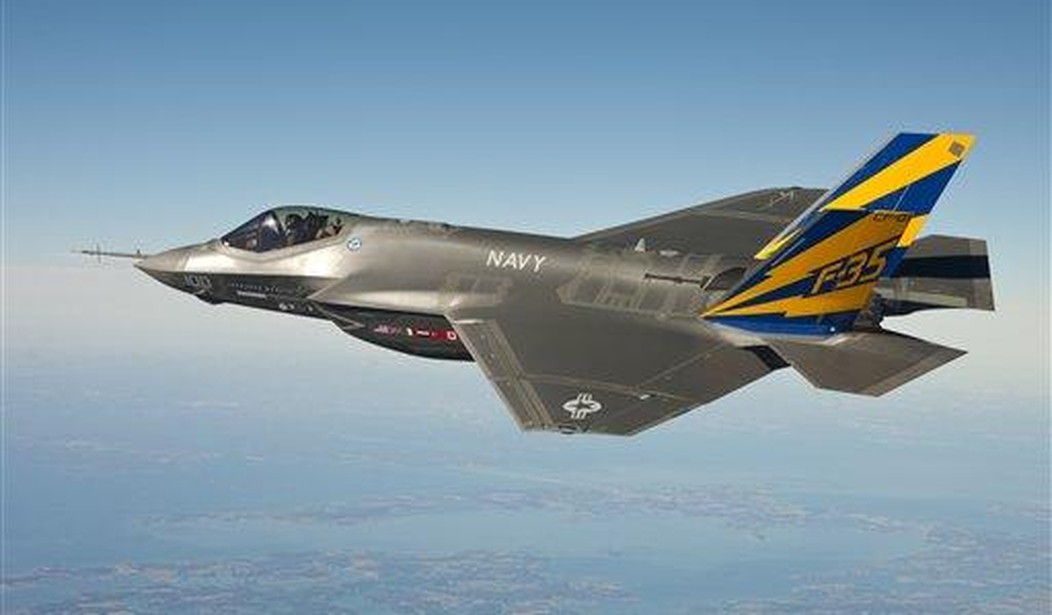History always has a danger of repeating itself.
A century ago, Army General Billy Mitchell, now recognized as father of the U.S. Air Force, fought against entrenched bureaucracy in Washington to invest in our nation's budding aviation capabilities instead of simply building more battleships. Today’s Air Force has a similar situation as it seeks to modernize the F-35 stealth fighter jet engines.
Since the plane is already a couple decades old, defense experts uniformly agree that an upgrade is necessary to stay ahead of technological advances by rival powers like China. However there’s been an inside-the-beltway battle off and on for a dozen years about how to do it.
After exhaustive research, thoughtful consideration and listening to his generals, Air Force Secretary Frank Kendall has reached the right decision on modernizing the F-35 propulsion system. Dubbed the Engine Core Upgrade (ECU),it will vastly improve the existing F135 engine in thrust and cooling thereby allowing for a heavier weapons load and better fuel efficiency.
Congress should back Secretary Kendall and not compel the Air Force to spend approximately six billion dollars more on a rival and completely new propulsion system called the Adaptive Engine Transition Program (AETP).
In a recent opinion column, former Congressman J.D. Hayworth of Arizona correctly identified a major pitfall should the AETP be forced onto the F-35 – that is to keep America’s aerospace and defense industry in balance.
Should General Electric Aviation get the contract to manufacture the AETP, the current F135 manufacturer, Pratt & Whitney, would go from rough parity in U.S. fighter jet production to a distant second, paving the path towards a monopoly for GE. That in turn would increase costs and decrease quality, which consistently happens with monopolies.
Similar points were made in the 1950s by General/President Eisenhower who warned us against a military industrial complex.
Recommended
As I wrote about last May, then F-35 Program Executive Officer, Air Force Lt. Gen. Eric T. Fick told reporters back in late 2021 that the Air Force would have to bear full costs of putting new AETP engines in its F-35 fleet if they wanted them because they aren’t designed for the Navy and Marines versions of the fighter. Fick said it would be unfair for the “Navy, Marine Corps, and [international] partners all footing part of the bill” to integrate an engine into that only the Air Force can use.”
If Kendall is overruled by Congress which is a remote possibility, the AETP change will create parallel maintenance and logistics chains to maintain fleets of old and new F-35s for all 14 nations which fly them and three U.S. military branches --for no real combat advantage.
Before heading any further down the AETP pathway, Congress should understand and appreciate battle domains, especially as they pertain to a potential conflict with China.
There are five domains: land, sea, air, space, and cyberspace. Should rising tensions with China turn into armed conflict, the main battle domain is not going to be land, as was Iraq and Afghanistan, or even island hopping against Japan during World War II. The main battle domains are going to be sea, air, cyber space and potentially space.
China still cannot match the capabilities of the United States Navy at sea. There is no reason to do so. Through its “Belt and Road Initiative” China is already projecting itself through southern Asia, Europe, and Africa. Moreover, building artificial islands and claiming existing ones off the mainland is serving China as a fleet of unsinkable battleships and aircraft carriers.
That leaves the air and cyber space domains as the most prominent.
American air power near China primarily comes from regional bases and of course the U.S. Navy. The U.S. and our closest allies in the region -- South Korea, Japan, and Australia must be thoroughly integrated to effectively fight China, should it come to that. Right now, they all fly the F-35 stealth fighter jet. Modernizing the F135 engine program with the ECU will enhance that integration. Meanwhile, AETP wouldamount to a costly and needless impediment to each country, forcing them into multiple supply chains to keep them flying.
Secretary Kendall is looking to the future on F-35 modernization. His conclusion is in the best interest of national security and taxpayers. He should be commended and supported. Though Pentagon leaders are used to public scorn when things go wrong, they should also get praised when things go right.

























Join the conversation as a VIP Member